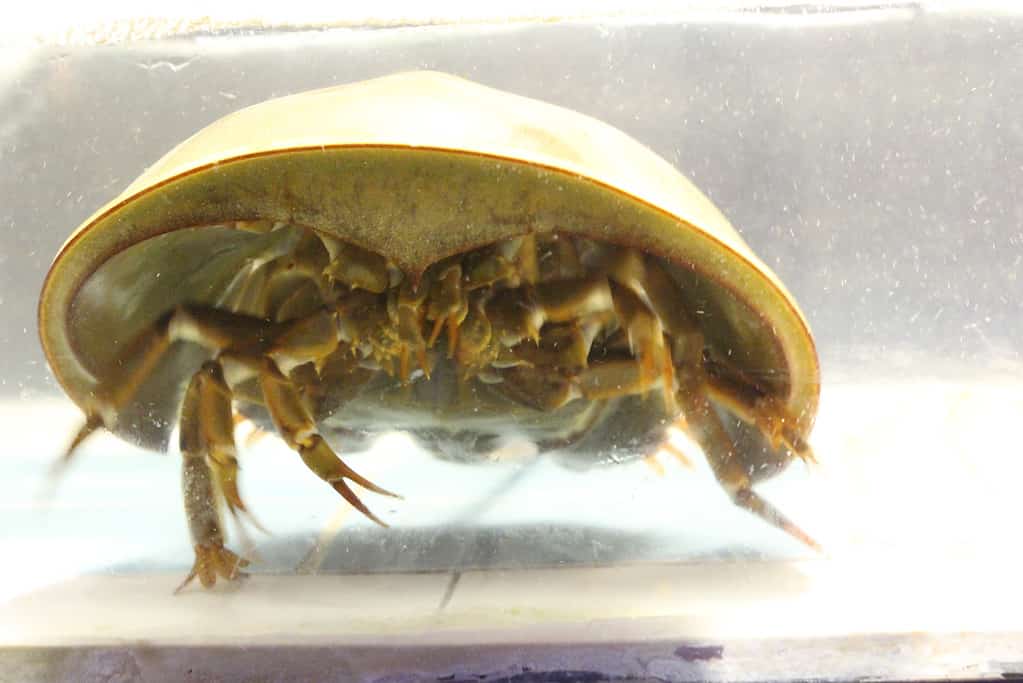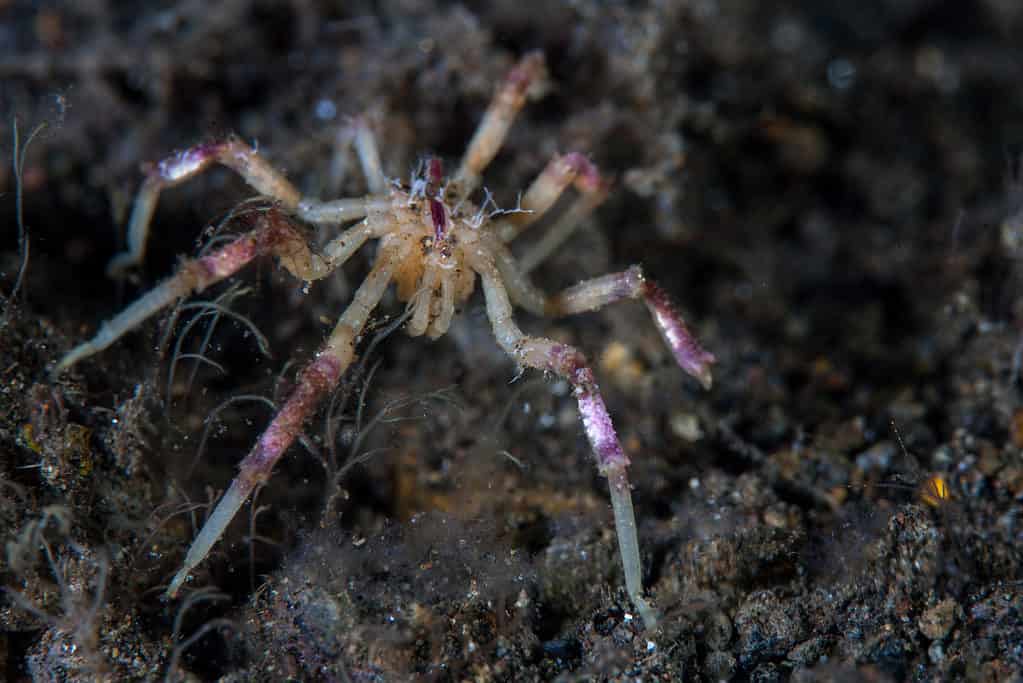A chelicera (plural, chelicerae) is a component of the fang- or pincer-like mouthparts of arthropods belonging to the subphylum Chelicerata. Of the many pairs of appendages these animals possess, the chelicerae represent the first pair. They manifest in a variety of shapes and forms but often serve primarily to manipulate food.
What Animals Have Chelicerae?
Subphylum Chelicerata comprises three classes — Arachnida, Merostomata, and Pycnogonida. We’ll break down these classes below, introduce some of the orders of animals within them, and talk about the structural differences in their chelicerae.
Arachnida
Arachnida is an extremely diverse class, comprising about a dozen orders that represent the vast majority of the chelicerates on the planet. Orders Acari, which represents the ticks and mites, and Aranea, which represents the spiders, are by far the most diverse of the bunch. Arachnida also includes well-known animals such as the scorpions of order Scorpiones and the harvestmen, or daddy-long-legs, of order Opiliones.
These animals all have two main body segments: the prosoma and the opisthosoma. The chelicera are located on the prosoma, in the front of the animal, and essentially act as its jaws. They are composed of three segments that allow them to articulate and perform specialized functions.

The bold
jumping spider
(
Phidippus audax) above uses its bright green chelicerae to subdue its prey.
©Sari ONeal/Shutterstock.com
In most spiders, the third segment of each chelicera serves as a sharp “fang”, which injects venom into prey animals. The chelicerae of ticks and mites, on the other hand, more resemble a pair of scissors which they use to cut into the skin of their hosts. These chelicera sometimes have small hooks or barbs that prevent the animal from being removed while it feeds.

Ticks use their scissor-like chelicerae to burrow into the flesh of their hosts.
©Tomasz Klejdysz/Shutterstock.com
In scorpions, the chelicerae are pincer-like in form, serving to tear prey animals into small pieces. They are not the animal’s large claws, or chelae — they are much smaller, located just in front of the eyes. Camel spiders like the one below use their massive jaws in a similar way, chewing and tearing away at their prey. They are incredibly strong for their size, able to chop up small bones and feathers with ease.

Of all the chelicerates, the fearsome
camel spiders
, or solifuges, possess the largest chelicerae relative to their body size.
©iStock.com/Willem Van Zyl
In addition to predation and digestion, some camel spiders use their chelicerae in another unique way. By rubbing them together, they can make hissing, rattling, or chittering noises to unnerve potential attackers. This behavior, called stridulation, can be seen in the video below:
Merostomata
The class Merostomata contains only horseshoe crabs. Despite their common name, they are more closely related to spiders than they are to crustaceans. Though many of them have gone extinct, there are four species of horseshoe crabs still extant today. In all four of them, the chelicerae present as small, pincer-like forelegs that serve primarily to locate food and pass it into the mouth.
This isn’t all, though. Horseshoe crabs are quite sensitive animals, containing millions of tiny sensory cells that allow them to interpret their world both visually and chemically. In addition to many thousands of receptors that cover the animal’s hard shell, many of them — around 4 million of them — line the chelicerae. As the horseshoe crab trawls the ocean floor, it uses these chemosensory receptors to differentiate between edible and inedible matter. If it contains the right amino acids in the right amounts, the crab makes a meal out of it. Interestingly, despite their incredible sensitivity and fairly selective diets, horseshoe crabs in the wild appear to intentionally ingest quite a bit of sand. Biologists believe that this is to aid in later digestion, completing the “chewing” job done by the gnathobases, or teeth-like spines, at the bases of its legs.

Horseshoe crabs have millions of special receptors that allow them to sense the world around them chemically. Many of these line the surface of the chelicerae, helping the crab to choose a suitable meal. In the photo above, the small chelicerae sit just below the central peak of the “horseshoe”.
©Kesorn Weaver/iStock via Getty Images
Pycnogonida
The third class of chelicerates are the pycnogonids, or sea spiders. They very closely resemble their terrestrial arachnid cousins despite being only distantly related. Rather than proper chelicerae, most sea spiders have appendages called chelifores. They are very similar in form and function to the chelicerae of the horseshoe crabs and many arachnids. Once a sea spider has a good grip on its prey, it inserts its proboscis to feed on the liquids inside. Interestingly, some pycnogonid species have underdeveloped chelifores and others lack them completely.

Sea spiders use their chelifores to grip soft prey like worms, jellyfish, sponges, and anemones.
©iStock.com/Velvetfish
While some biologists believe that the pycnogonids may belong to a separate, very primitive line of arthropods, many others assert that the developmental characteristics of the chelifores prove their relation to the arachnids and merostomatids. Though continued research will certainly shed light on their true lineage, the jury is currently out.



